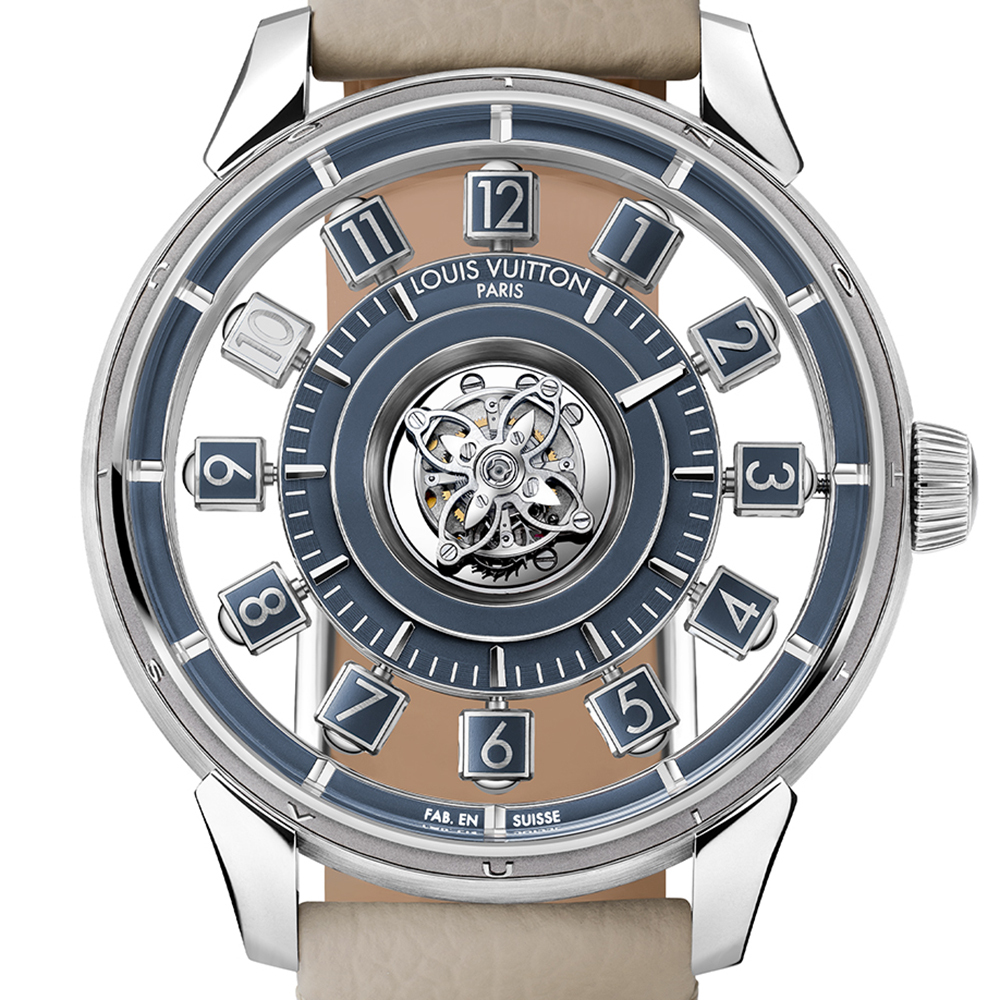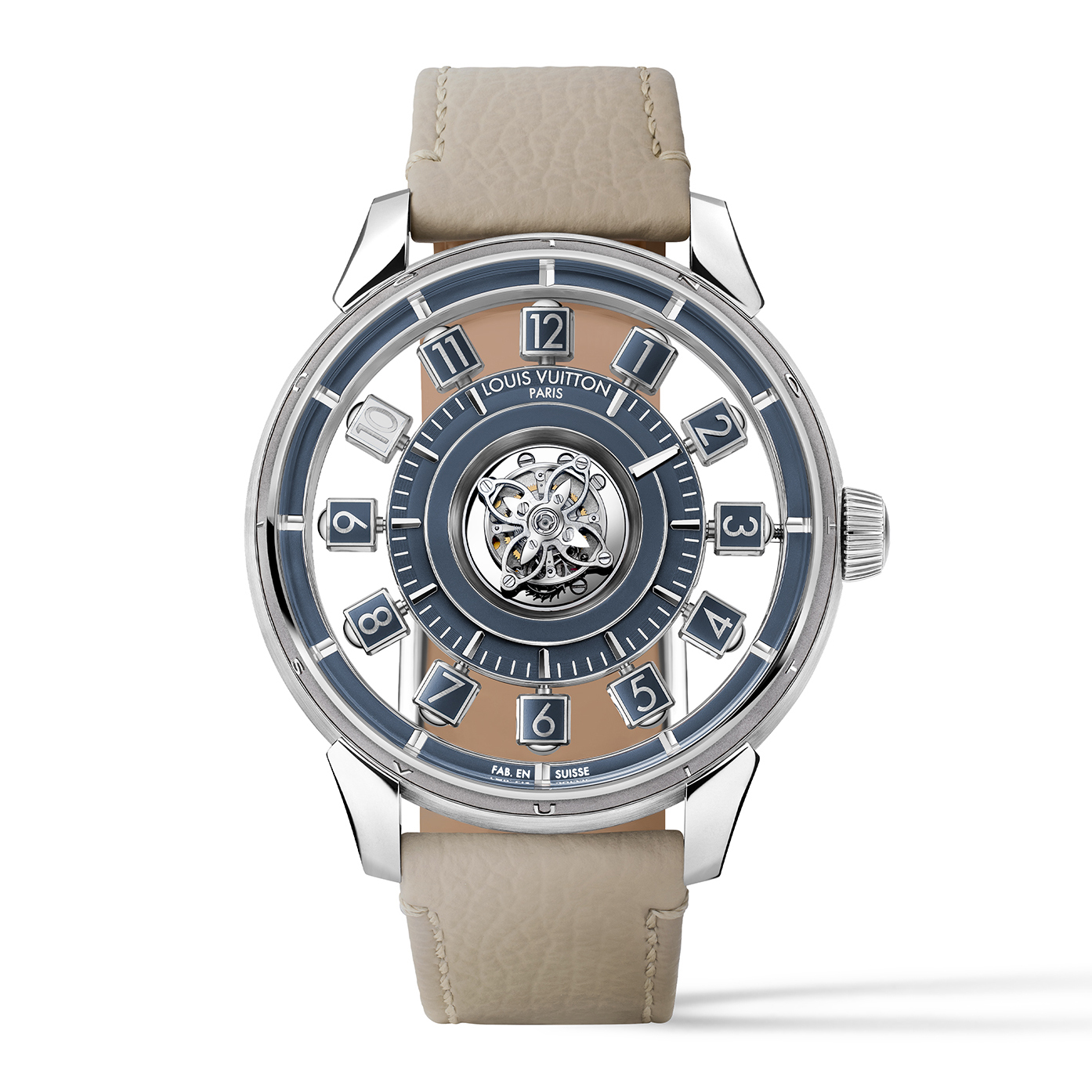
Tambour Taiko Spin Time Air Flying Tourbillon
Power reserve: 45 h, 28800 vph
A complication unique to Louis Vuitton, the Spin Time is synonymous with the House. The three-dimensional, dynamic display has been part of Louis Vuitton’s Haute Horlogerie collection since 2009, when the avant-garde time display became the first movement developed by La Fabrique du Temps for Louis Vuitton. The ingenious jumping hours display was devised by La Fabrique du Temps founders Michel Navas and Enrico Barbasini, who were inspired by the flap displays of airports and train stations.
Sixteen years after the seminal moment that saw the birth of the Spin Time, Louis Vuitton presents the Tambour Taiko Spin Time. Still centred on the patented three-dimensional jumping cubes display, the Tambour Taiko Spin Time is nonetheless an entirely new collection, comprised of six limited-edition models, each conceived from the ground up as the ultimate refinement of the complication.
The Tambour Taiko adopts the familiar case middle of the original design but evolves the form to incorporate integrated lugs to create a sleeker form that is both contemporary and elegant. This case is a masterclass in the interplay of mirrored and satin surfaces, as well as relief and recessed elements.
The Tambour Taiko Spin Time Air Flying Tourbillon is an unparalleled combination of two major complications put together. Blending Louis Vuitton’s floating Spin Time Air display with a traditional flying tourbillon, this timepiece exemplifies the brand’s distinctive horological identity. Integrating both mechanisms within the limited central space of the case required exceptional engineering by La Fabrique du Temps. With the cubes occupying the outer volume, the automatic movement and tourbillon were cleverly housed at the core. The flying tourbillon, shaped like a Monogram flower and hand-finished in steel, completes one hypnotic rotation per minute. Its polished lower plate mirrors the intricate details beneath, showcasing the artistry of the movement.
Incorporating a flying tourbillon into the LFT ST05.01 movement called for extensive reengineering of the base calibre. Not only was the going train rearranged to locate the tourbillon on the dial, but the minute hand also had to be situated under and around the tourbillon.


